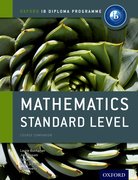Continuous Probability Distributions, Normal Distribution - IB Maths HL
How can we find the standard deviation of the weight of a population of cats which is found to be normally distributed with mean 2.1 Kg and the 60% of the dogs weigh at least 1.9 Kg.
IB Mathematics HL – Continuous Probability Distribution, Normal Distribution
A normal distribution is a continuous probability distribution for a random variable X. The graph of a normal distribution is called the normal curve. A normal distribution has the following properties.
1. The mean, median, and mode are equal.
2. The normal curve is bell shaped and is symmetric about the mean.
3. The total are under the normal curve is equal to one.
4. The normal curve approaches, but never touches, the x-axis as it extends farther and farther away from the mean.
Approximately 68% of the area under the normal curve is between and
and 
and . Approximately 95% of the area under the normal curve is between and
and  . Approximately 99.7% of the area under the normal curve is between
. Approximately 99.7% of the area under the normal curve is between  and
and 
The standard normal distribution is a normal probability distribution that has a mean of 0 and a standard deviation of 1.
)
Concerning your question
Let the random variable denotes the weight of the cats, so that
denotes the weight of the cats, so that
)
We know that=0.6)
Since we don’t know the standard deviation, we cannot use the inverse normal. Therefore we have to transform the random variable to that of
to that of
) , using the transformation
, using the transformation 
we have the following
=0.6%20\Rightarrow%20P(\frac{C-%202.1}{\sigma}%20\geq%20\frac{1.9-%202.1}{\sigma})=0.6)
=0.6)
Using GDC Casio fx-9860G SD
MAIN MENU > STAT>DIST(F5)>NORM(F1)>InvN>
Setting Tail: right
Area: 0.6
 :1
:1
 :0
:0
We find that the standardized value is -0.2533471
Therefore,
)
How can we find the standard deviation of the weight of a population of cats which is found to be normally distributed with mean 2.1 Kg and the 60% of the dogs weigh at least 1.9 Kg.
The Answer is from www.ibmaths4u.com
A normal distribution is a continuous probability distribution for a random variable X. The graph of a normal distribution is called the normal curve. A normal distribution has the following properties.
1. The mean, median, and mode are equal.
2. The normal curve is bell shaped and is symmetric about the mean.
3. The total are under the normal curve is equal to one.
4. The normal curve approaches, but never touches, the x-axis as it extends farther and farther away from the mean.
Approximately 68% of the area under the normal curve is between
and . Approximately 95% of the area under the normal curve is between
The standard normal distribution is a normal probability distribution that has a mean of 0 and a standard deviation of 1.
Concerning your question
Let the random variable
We know that
Since we don’t know the standard deviation, we cannot use the inverse normal. Therefore we have to transform the random variable
we have the following
Using GDC Casio fx-9860G SD
MAIN MENU > STAT>DIST(F5)>NORM(F1)>InvN>
Setting Tail: right
Area: 0.6
We find that the standardized value is -0.2533471
Therefore,
